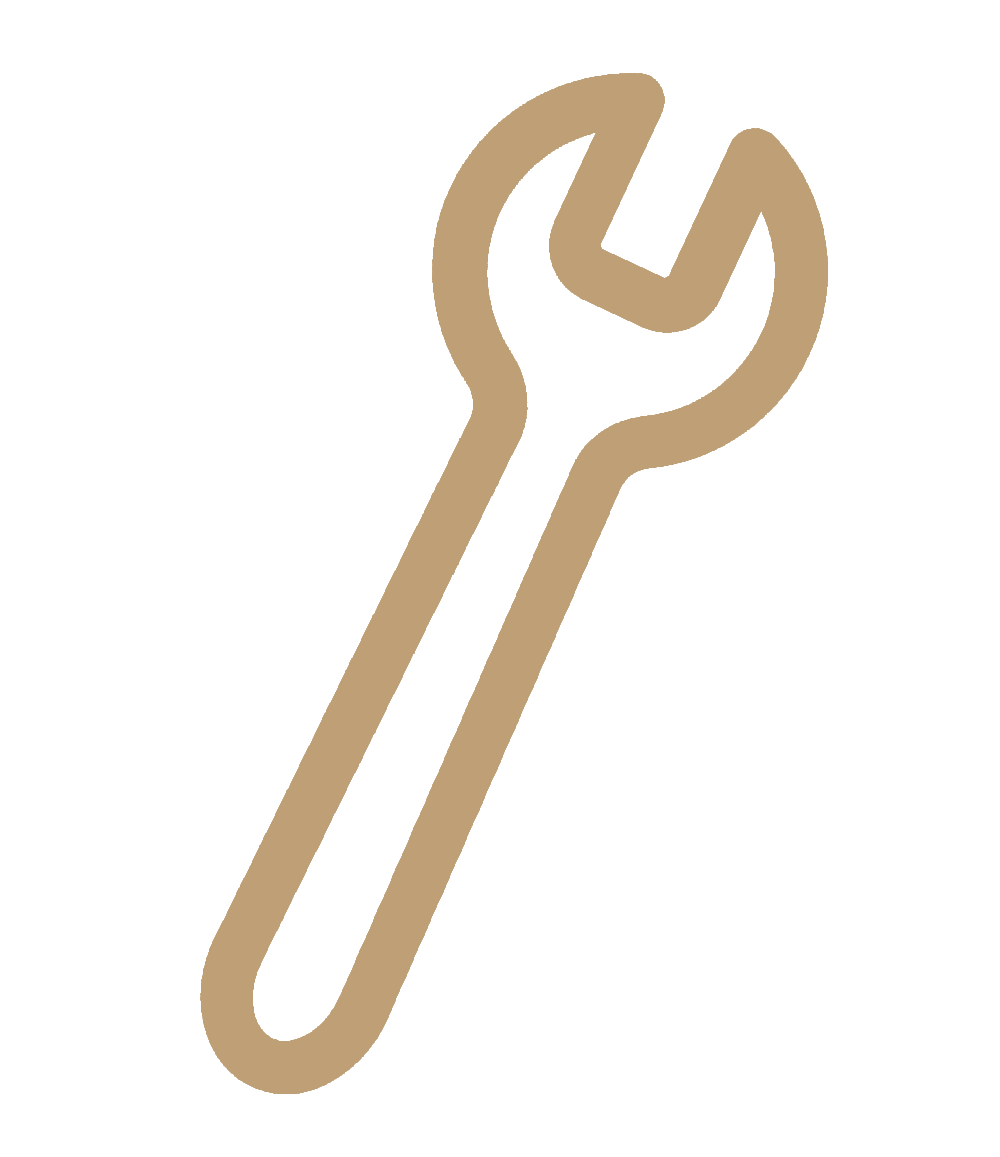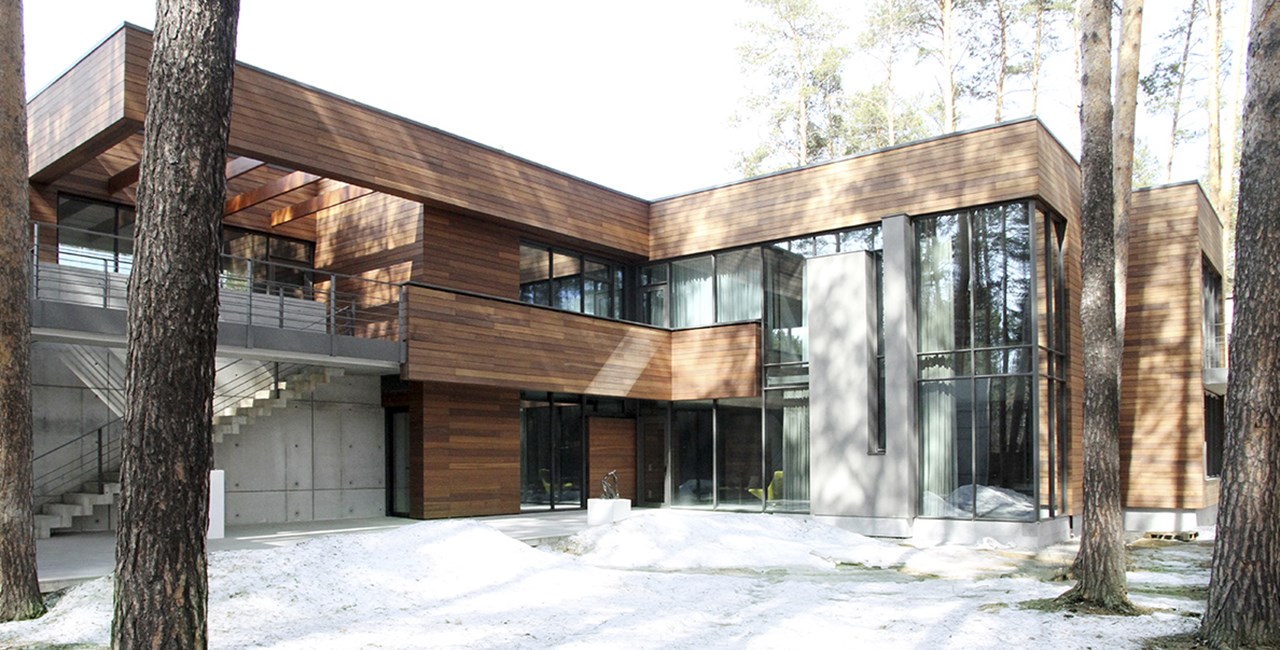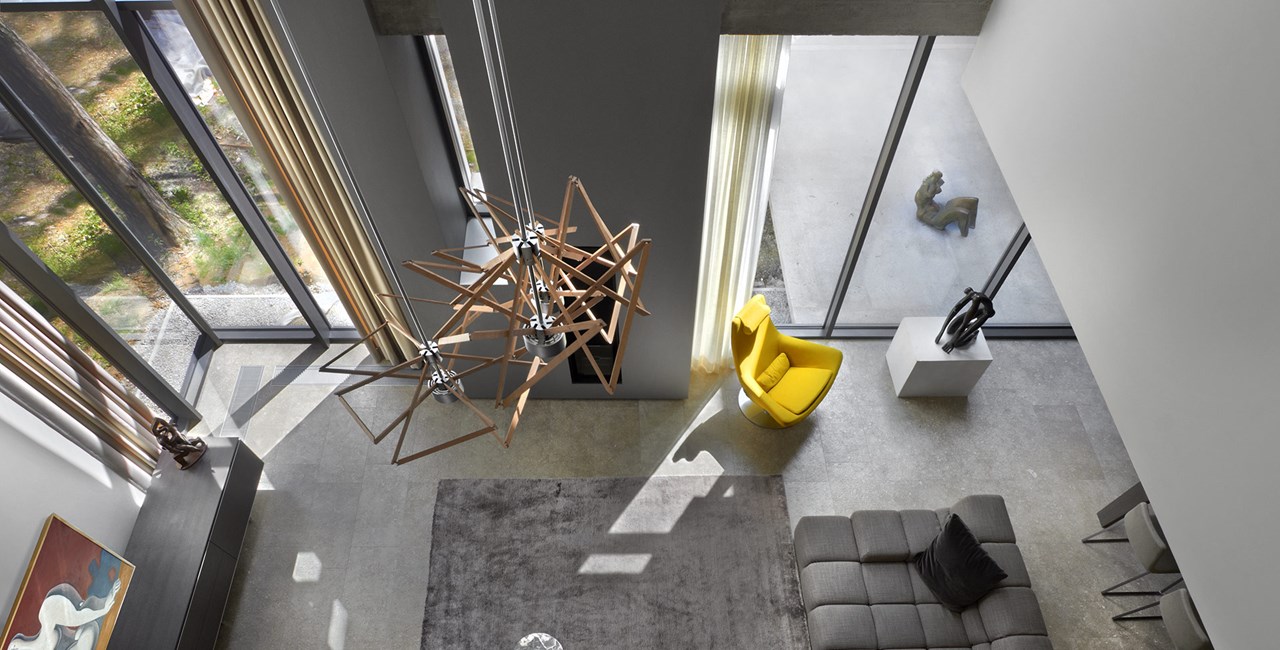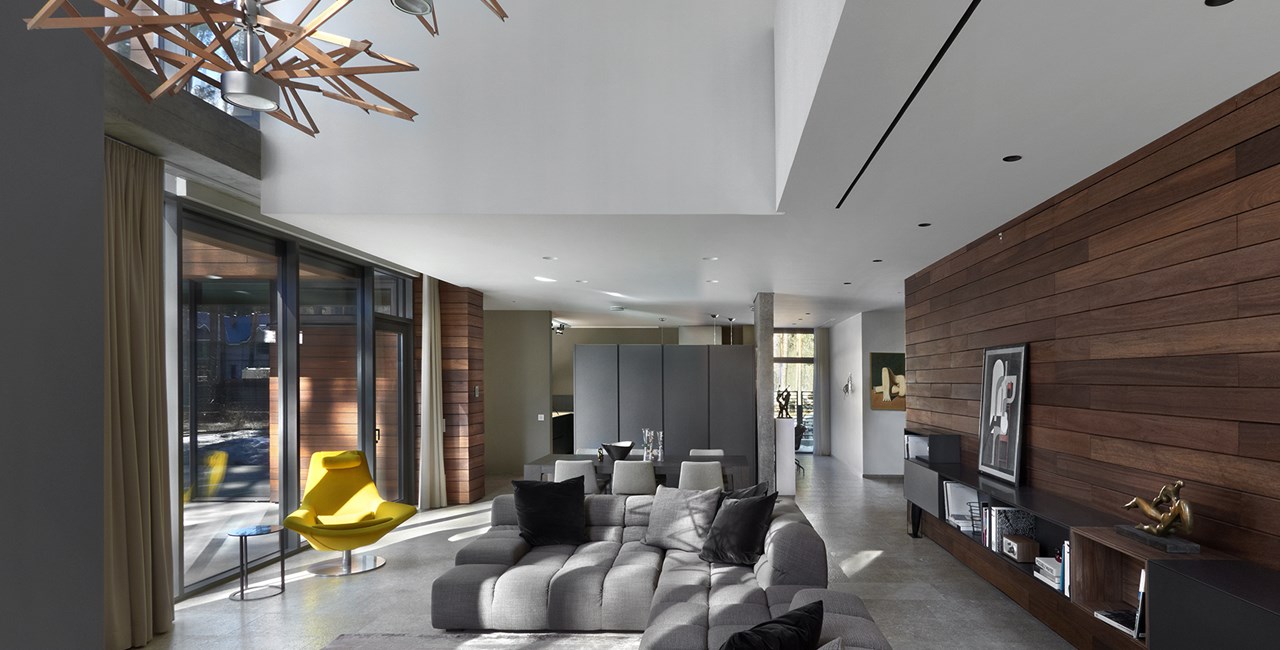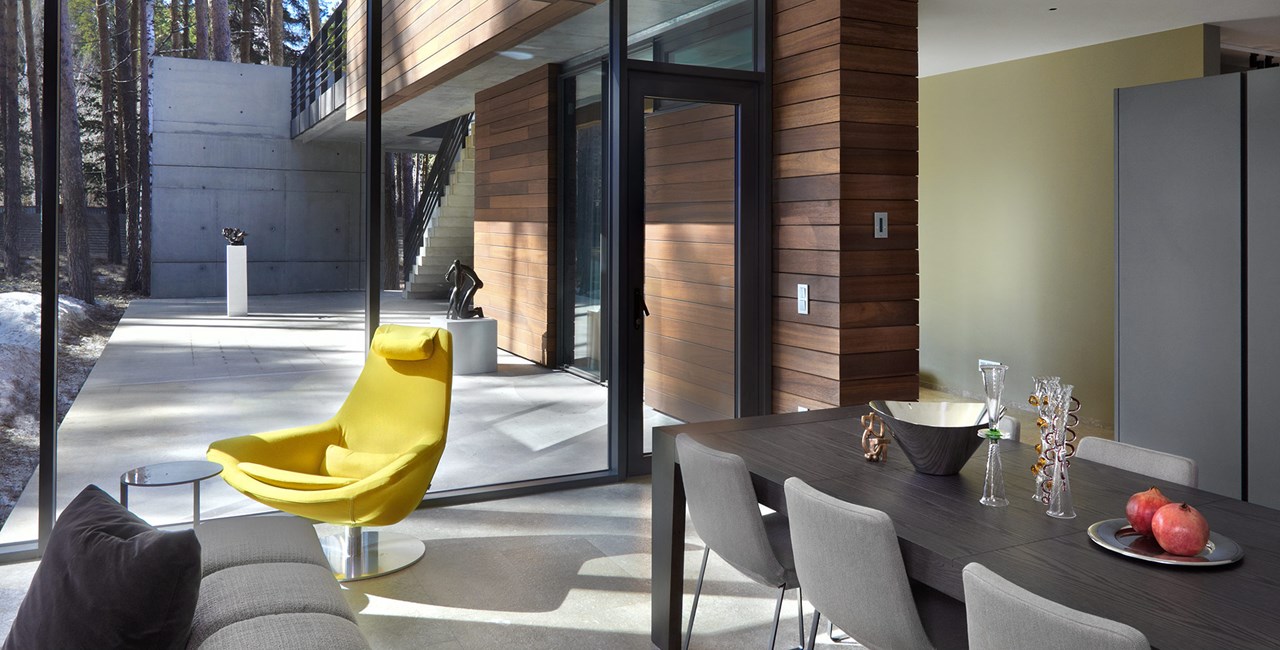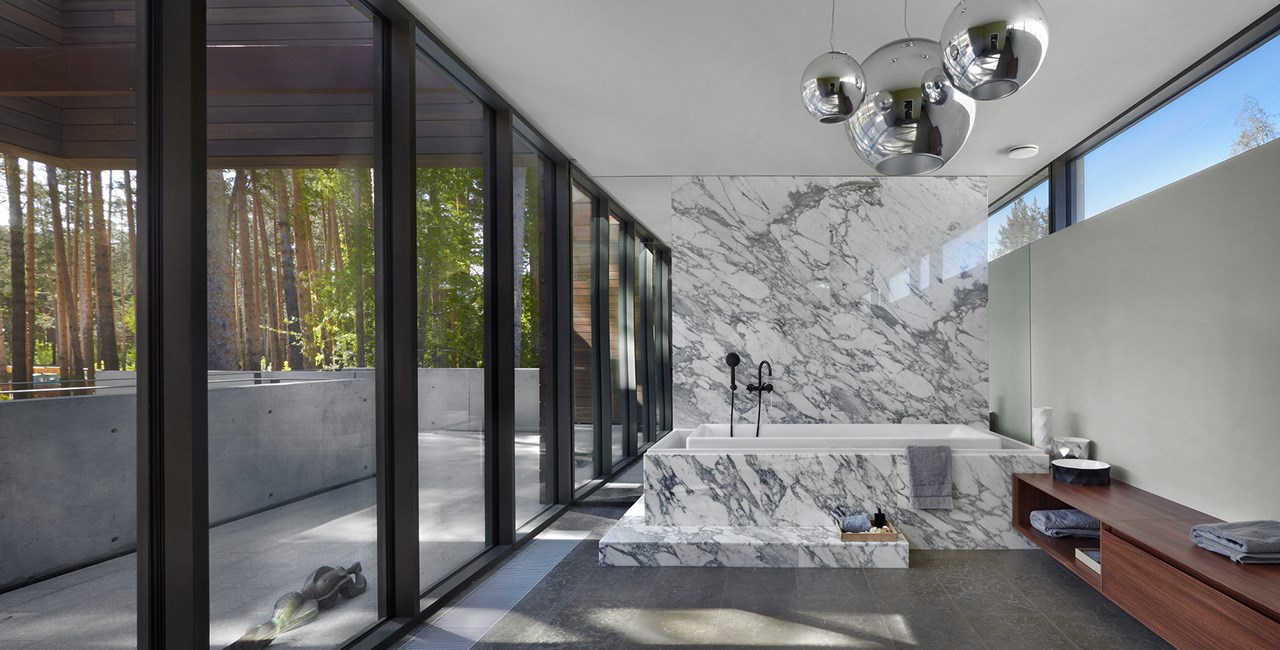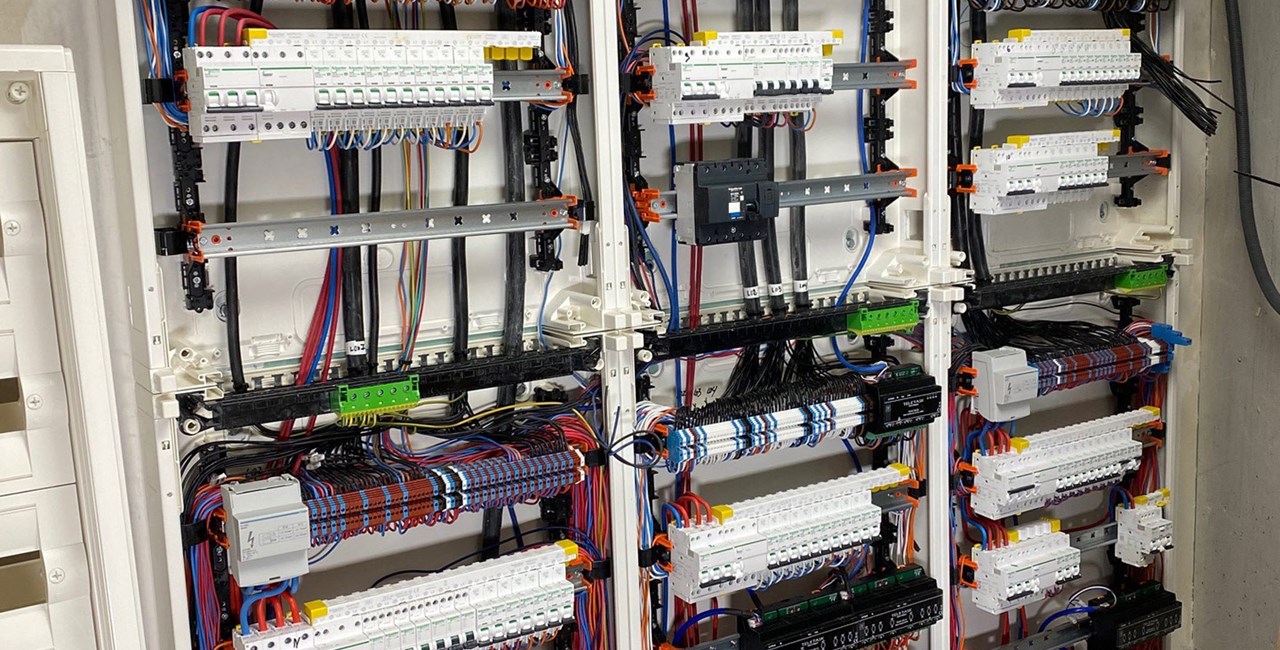How much does it cost to equip a home with a full integrated smart system?
Suppose a builder or renovator wants to enjoy the comfort and safety of an integrated home automation system. How much does it cost? TELETASK explains it to you in detail. Anyone opting for it must take into account four types of costs:
1. the basic electrical installation (wires, cables, electrical board, wall sockets...)
2. the connected equipment which is to be managed (lights, sun blinds, HVAC, etc...)
3. the components of the home automation system itself (wall panels, tech interfaces...)
4. the installation and the configuration of the whole (study, planning, project management...).
The electrical installation
How much the electrical installation of a house costs depends mainly on the number of (light- and wall- socket) circuits, cooling/heating and audio zones and the motorised blinds/shades and curtains you want to control. The electrical installation of a house with thirty circuits obviously has a different price tag than that of a house with three hundred circuits.
The connected equipment and the system
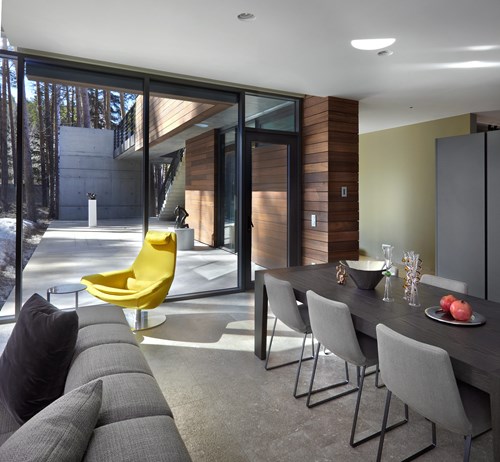
To control the home, the home automation system must of course be connected to the equipment that needs to be controlled. Together with the electrical installation, they make up the main part of the total electrical installation. First we’ll discuss these devices, and then there is an interesting 'but'.
First: the switched and dimmed light circuits and the wall sockets. Obviously, it makes a financial difference if the resident provides one central light point in a room, or several. Some power controls are crucial to control connected home appliances in order to meet the energy management requirements (e.g. Solar panels, HVAC, hot water boiler, EV charging, etc... in combination with a digital energy meter).
Then there are the motorised sun blinds. These are a must in a future ready low-energy house. The home automation system controls them automatically to keep out the heat on hot summer days. This intelligent regulation can also ensure that an energy-intense air conditioning system does not need to work (or work much less). It is taken care of by the smart system, even while you are out. No need to worry.
Then there is the air-conditioning (heat pump) system itself. Depending on the climate, this may be heating only, cooling only or a combination of both. To heating/cooling works at the lowest possible energy consumption. In such case, a heat pump based system is often the best solution from an energy point of view. Nowadays, it can also provide domestic hot water. In combination with solar panels, the consumption costs will go down even more if the necessary intelligence is present in the home automation system. Multi- zone control is crucial here, regardless whether you work with traditional radiator, fan based or under floor heating.
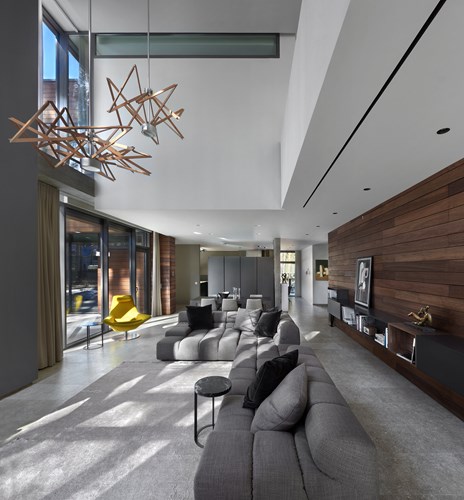
Don't forget the multi zone audio system. Built-in speakers do not weigh so heavily financially, but you should plan for them in advance. In the end, though, you also need amplifiers which may be more expensive. The number of audio zones will also influence the cost. However, you can also make this investment afterwards, or step by step because a home automation has a modular set-up. If you do not wish to install speakers immediately, you can have the system integrator provide the necessary cabling. As a specialised home automation installer, he will point out the possibilities for you. A home automation system can also control wireless speakers, but these have to be plugged into a power socket which can disturb a clean interior design and make maintenance (cleaning costs) more expensive. Wireless systems are made for existing houses and not for/less for new houses and residences being renovated. It is therefore better to choose built-in speakers but which are to be pre- wired. Most popular audio streaming systems have an amplifier that can drive hidden and built-in speakers.
In addition to the obvious functions listed above, you probably have some other technical controls. These can be doors, gates, a fountain, motorised outdoor awnings, technical valves and pumps. With a water valve on the main line, for example, residents can be sure that the water supply has been shut off after leaving the house for a short or long time. This extra security costs relatively little, but increases your comfort and safety enormously without you having to do anything yourself. Your home automation system makes sure that the valve only closes some (3) hours after you left, so that the dishwasher and the washing machine can continue to do their job after you left. Likely timers are part of the intelligence, in order to control the on/off switched socket outlets and circuits for the tumble dryer, driveway lighting, motorised gates fences, etc...
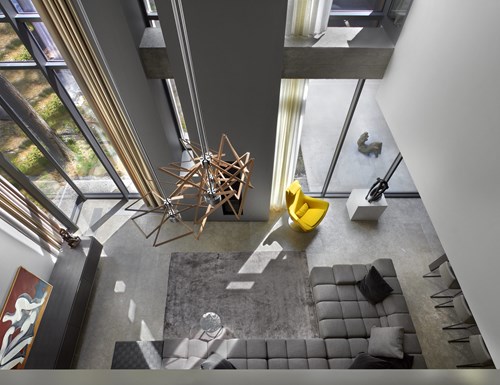
There are also integrated systems like for access control, the burgler and fire alarm. For a comfortable and safe integration with the video door phone and CCTV system, these should be LAN connected. Therefore, these may be from a higher price segment, but the cameras are included for security reasons. There is also the possibility to automatically and manually record images. Thanks to the integration with the home automation system, you can also answer door calls via your smartphone when away, if you want so. But about all other functions are also available on your smartphone. Control and status information of lights, shades, gates, doors, room temperatures, etc.. Also to check a camera when out for holidays is a typical example. This smart phone integration option has a limited additional cost but it ensures that your home and its functions are always close at hand, whether you're in your garden, visiting the neighbours or family, or at a work or travel destination. An important and comfortable option not to be missed. Aso the perfect energy manager if you want to change some function from remote site or out on the terrace or from your lazy chair.
A crucial ‘but’
The point is: many of the above things such as lighting, shading, cooling / heating, are necessary anyway, even if don’t opt for integrated home automation. While the home automation parts only cost a smaller part of the electrical installation and the above devices and appliances.
The more systems and circuits you have to integrate into the home automation system, the higher the price of a traditional or smart integrated installation will be. The total cost of home automation, as percent part of the total construction budget, will be lower in a large installation than in a very small one, because you only have to buy the intelligence once. Be it an apartment, townhouse, luxury villa or castle, the basic intelligence is actually the same. Its just the capacity (numbers) of interfaces which are different. At TELETASK, there are solutions from small to large, and everything is modular. For a family home, we are talking about orders of magnitude of 5,000 to 15,000 euros for the home automation components. For large houses, this can double, but it always remains a smaller part of the total construction budget of a new house. It's usually somewhere around 3%, but if you want all the bells and whistles, this can increase to 5% or even more. The more you have to manage, the relatively cheaper it will be. In a new building of 400,000 euros, 3% equals 12,000 euros for the home automation components. This is, of course, without the standard electrical installation and the integrated appliances like HVAC among others. So it' s a feasible cost for a higher comfort, but also a higher safety and an optimal energy management, which will save you money on the long run. Your home will not only become more sustainable, but also more valuable, because with the integrated system it is ready for the future. This cost-recovery element can be of such magnitude that you can even recoup the basic cost of it.
Be sure to provide enough separately switchable outlet circuits. This way, you have to integrate more circuits in the home automation system, but the system can manage the cost for energy consumption of as many appliances as possible separately, and thus optimally reduce the energy cost. The home automation system will ensure that it takes care of the integration of solar panels, heat pump, hot water boiler, underfloor heating or electric accumulators that store heat from the energy of the solar panels. But it will also manage the car charging station of the electric car when necessary. All these systems have their own intelligence, but to make them work together meaningfully, the integration with the home automation system is absolutely needed. Such smart system is the only system that has all the necessary information and controls in hand. The home automation system knows whether you are at home or not, what temperatures you want in the various rooms and how it can reduce power consumption when, for example, energy from the grid is expensive. Or it can tell the car charger to temporarily go to low power mode when your are cooking and your electrical installation is already consuming full charge.
And what about the maintenance costs? Well, this is non-existent, if the resident chooses for a professional installed home integrated and connected system, such as the one from TELETASK. There is no need for maintenance and therefore there is no maintenance cost.
At the other hand you can adjust several settings yourself, if you want to. Or you can leave everything to your system integrator when your needs are changing. Finally, the home automation system is infinitely flexible, without even using a screwdriver. If you wish, the system integrator doesn't even have to come on site. He can remotely carry out your configuration changes via a highly secured connection. You therefore have no call-out charge, which realises the highest cost efficiency and speed of service at the lowest carbon footprint.
What’s more: home automation pays off!
TELETASK already mentioned this in this blog post. But the Bulgian independent research organisation VITO, calculated that a fully integrated home automation installation in a NZE (near zero energy) house, typical single-family home pays for itself in the long run and even yields profits afterwards.
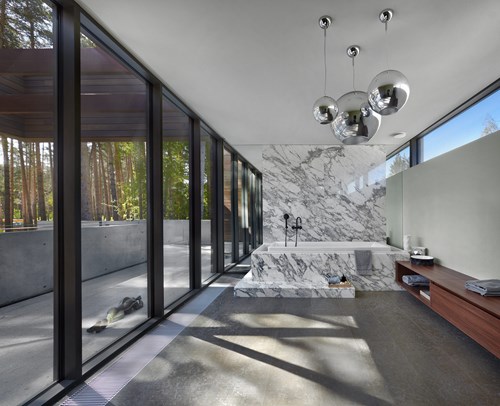
Thanks to the smart energy management of the home automation system, the occupant of the house saves at least 500 euros per year (study done by VITO for a semi-open small house of 138m² with a family of four). Or about as much as the extra monthly payment over 20 years for financing the HA system. And this while TELETASK domotics lasts up to 30 years. So the resident saves on energy costs for another 10 years and lives in comfort and safety for years to come. And that, of course, is the best justification for the cost of home automation: your comfort and your safety.

